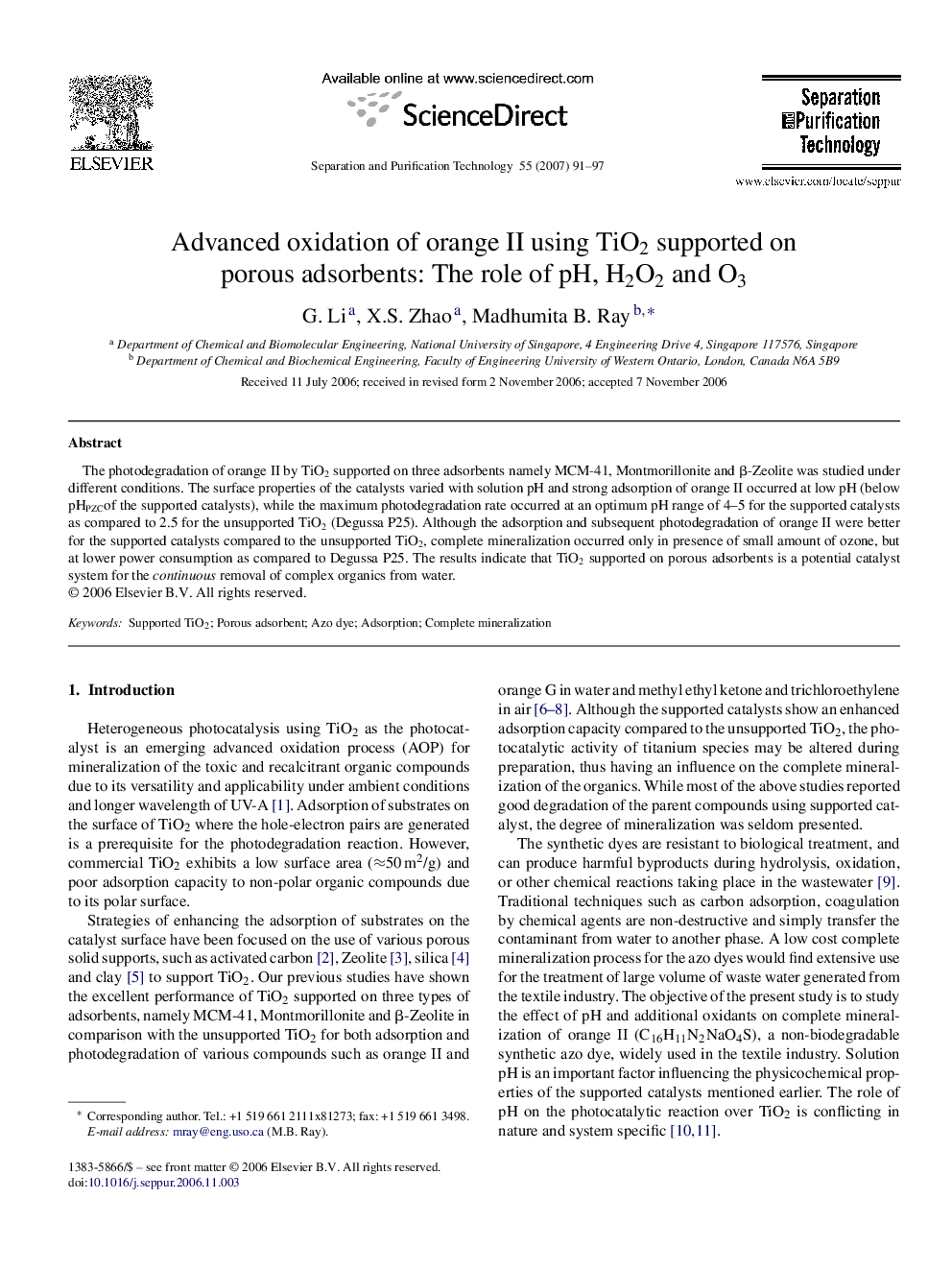| Article ID | Journal | Published Year | Pages | File Type |
|---|---|---|---|---|
| 644254 | Separation and Purification Technology | 2007 | 7 Pages |
The photodegradation of orange II by TiO2 supported on three adsorbents namely MCM-41, Montmorillonite and β-Zeolite was studied under different conditions. The surface properties of the catalysts varied with solution pH and strong adsorption of orange II occurred at low pH (below pHPZCof the supported catalysts), while the maximum photodegradation rate occurred at an optimum pH range of 4–5 for the supported catalysts as compared to 2.5 for the unsupported TiO2 (Degussa P25). Although the adsorption and subsequent photodegradation of orange II were better for the supported catalysts compared to the unsupported TiO2, complete mineralization occurred only in presence of small amount of ozone, but at lower power consumption as compared to Degussa P25. The results indicate that TiO2 supported on porous adsorbents is a potential catalyst system for the continuous removal of complex organics from water.
